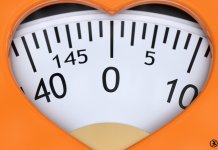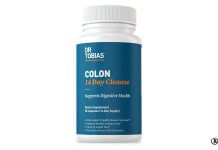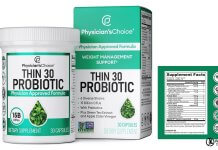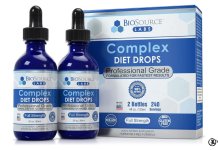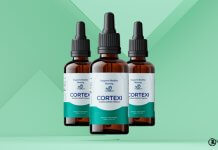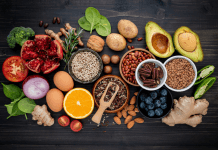I get commissions for purchases made through links on the site. As an Amazon and Clickbank Associate I earn from qualifying purchases. Learn more.
If you’re struggling to lose weight, you may think eliminating fats in your diet is the only way forward. Unfortunately, it’s not always easy to do this since the body also needs fats for various functions, including energizing the body, making the skin soft, supporting healthy inflammatory pathways, strengthening bones, and maintaining healthy glucose levels. Fats also insulate nerves, build cell membranes, and make vitamins work better in the body. Therefore, this shows the critical role played by fats in the body. If you limit fat intake in your diet more, you’re likely to expose yourself to serious health risks. According to dietary research, an adult should get 20%-35% of calories directly from fats. You shouldn’t lower or exceed this limit for a healthy body. Research also shows that the benefits and risks associated with fats are changing rapidly due to evolving lifestyles. Fats are broadly categorized as follows:
Estimated reading time: 9 minutes
Table of contents
- Protetox – Protetox is a natural weight loss formula that helps you lose weight and keep it off. This is a detailed beginner’s guide to Protetox, including a list of ingredients and side effects.
Saturated Fats
These fats mainly originate from animal products such as dairy products, pork, beef, eggs, and poultry. There are other sources of these fats, including vegetable oils like palm oil. These fats are required by the body but in small quantities. Research shows that saturated fats should form 10% or fewer calories every day. The most preferred sources for these saturated fats include low-fat dairy products and lean poultry.
Unsaturated Fats
Unsaturated fats are good and healthy fats recommended for consumption since they play a significant role in building a healthy body. Unsaturated fats are categorized into two, i.e., monounsaturated fats and polyunsaturated fats. Some foods with high monounsaturated fats concentration include almonds, peanut oil, pumpkin seeds, canola, hazelnuts, olive oil, pecans, etc. On the other hand, soybean oil, fish, flaxseed oil, sunflower oil, and corn oil contain high levels of monounsaturated fats. There are also omega-3 fatty acids that are present in salmon, herring, walnuts, and canola oil. Studies show that omega-3 fatty acids are good for heart health.
Trans Fats
These are the problematic unsaturated fat forms that are mainly present in animal products, including dairy products and meat in tiny amounts, as well as margarine and baked goods. Trans fats are made through hydrogenation. Trans fats are cost-friendly and don’t expire quickly, which is why they are used in most food items, especially in restaurants.
Can Fats Cause Obesity?
Generally, fat can contribute to obesity. However, it’s not the only thing that results in the problem. There are many other factors that contribute to obesity other than overeating. For instance, if you consume more calories than you actually burn, you’ll automatically gain weight. The case could also worsen if you don’t engage in physical activity. Obesity can also result from environmental factors, genetics, medical conditions, and emotional factors like stress. Dietary fats have a crucial role when it comes to obesity. Typically, taking fats is very easy, especially if you like foods containing fats, including processed foods, cheese, ice cream, French fries, cookies, and thick steaks. Research shows that increased intake of fats increases the risk of heart disease, type 2 diabetes, and various forms of cancer. Therefore, it’s essential to ensure that you select the best dietary fats to limit such risks, which can be life-threatening.
Fats and Cholesterol
Dietary fats are beneficial in controlling cholesterol levels in the body. The human body needs cholesterol in small amounts to boost metabolism, make hormones such as adrenal, testosterone, and estrogen, build cell membrane structure, and accelerate the production of vitamin D. Cholesterol becomes dangerous in the body when it exceeds the required limit, thus posing health risks. It’s classified into HDL cholesterol and LDL cholesterol. Dietary experts recommend keeping HDL cholesterol levels high and LDL cholesterol levels low to promote heart health and reduce cardiovascular risk.
Unhealthy Fats vs Healthy Fats
Understanding that all fats aren’t healthy for the body is essential. Unsaturated fats are healthy, whereas saturated fats and trans fats aren’t healthy. To ensure you gain the benefits of healthy fats and avoid the effects of unhealthy fats, it’s essential to distinguish between the two and their sources.
- 14 Day Rapid Soup Diet – With the Rapid Soup Diet, you will feel full for a long time with fewer calories than you ever thought possible. The rapid soup detox diet also detoxifies your lymphatic system, allowing your body to clean itself properly, and boosts your metabolism.
Unhealthy Fats
Saturated and trans fats are classified as unhealthy fats. Although there are high chances that you’ll take these unhealthy fats, you should limit their consumption as much as possible. Studies show that these unhealthy fats can clog arteries, increase cholesterol levels, and the risk of developing heart disease, which can be dangerous. Saturated fats are common in animal products, including high fat dairy products, meat, eggs, and poultry. They’re also available palm and coconut oils. A recent study shows that the intake of saturated fats should be limited to around 7% to reduce the risk of heart-related problems. According to dietary researchers, people should only use liquid vegetable oils instead of animal fats. Studies have linked saturated fats with a high risk of prostate and colon cancers.
Trans fats are also unhealthy fats which are categorized into naturally occurring and artificial fats. Naturally occurring trans fats are mainly common in meat and dairy products in very small quantities. On the other hand, artificial trans fats are hardened liquid oils through partial hydrogenation. You’ll find these fats in most restaurants and cafes where they make packaged snack foods, baked goods, microwave popcorn, cookies, crackers, etc. Some recent studies have shown that artificial trans fats are more harmful to human health compared to their counterparts’ saturated fats. Even if you consume tiny quantities of these fats, you’ll be at risk of reducing HDL and raising LDL levels which can lead to heart disease.
Healthy Fats
As earlier stated, unsaturated fats are considered to be healthy fats. They’re classified into monounsaturated and polyunsaturated fats. These two types of healthy fats reduce cholesterol levels and heart disease risks. Polyunsaturated fats are commonly found in vegetable oils. Their primary role is to reduce triglyceride and cholesterol levels. Omega-3 fatty acids belong to the class of polyunsaturated fats and have many positive benefits to the human heart. They’re common in fatty fish, including mackerel, salmon, catfish, and trout. You can also get omega-3 fatty acids in some plant sources, although they’re not effective in reducing the risk of cardiovascular issues, as in the case of fatty fish. Some people also think that it’s a wise idea to take supplements containing omega-3s to boost their health. However, this isn’t recommended, especially if you’ve not been diagnosed with heart disease. Monounsaturated fats also help lower heart disease risk. These fats are common in Mediterranean regions, mainly from olive oil. These fats become solid when refrigerated and liquid at room temperature. Monounsaturated fats contain antioxidant vitamin E, which is found in olive oil, sesame seeds, peanut oil, Brazil nuts, pumpkin seeds, cashews, and canola oil.
Benefits of Healthy Fat
- It balances cholesterol levels, thus improving heart health.
- Supports healthy inflammatory pathways.
- Strengthens bones.
- Improves brain function.
- Promotes good and quality sleep.
- Maintains healthy blood glucose levels.
- Promotes healthy body composition.
- Promotes skin health.
Tips to Help You Include Healthy Fats in Your Diet
It can be tiresome to count the fat grams you take daily. However, you can incorporate fruits, vegetables, beans, fatty fish, and nuts into your diet and reduce taking processed or fried foods. Below are some top tips to help you swap unhealthy fats for healthy fats:
- Make cooking or baking with liquid oil a routine and avoid solid fats at all costs.
- Use avocados to make salads and sandwiches to add a creamy texture.
- Replace meats with fish and other protein plant sources.
- Select a whole grain, vegetables, or fruits rich diet.
- Avoid fattier sauces by replacing them with lemon juice, vinegar, and mustards.
- Reduces high-fat foods like fried foods, desserts, processed foods, baked goods, sweets, etc.
- Avoid deep frying foods but rather consider steaming, baking, or grilling them.
- Be extra careful when taking foods claiming to be low in fat or fat free. This is because such foods contain more refined carbohydrates and added sugars.
In conclusion, these are some of the top tips to help you incorporate healthy fats into your diet and avoid unhealthy ones. The more you learn about the various forms of healthy and unhealthy fats, the easier it’ll be to change and adapt to healthy choices. It’s essential to understand that each category of fats can affect the body differently. You should also find the best foods with healthy fats to reduce the risk of developing heart-related problems, inflammation, cancer, and diabetes and live a comfortable and healthy life.
Reading Food Labels
In today’s fast-paced world, where food choices abound, deciphering the nutritional content of packaged foods is essential for making informed dietary decisions. Nutrition labels provide a wealth of information, but understanding them can be a bit like decoding a secret language. This article aims to demystify food labels, breaking down the essential components and helping you make healthier choices for you and your family.
Why Are Nutrition Labels Important?
Nutrition labels are not just pieces of paper glued to the back of food packages; they are valuable tools that empower consumers to select foods that align with their health goals. These labels provide critical information about the nutritional content of a product, helping individuals make choices that can contribute to better health and well-being.
Breaking Down the Nutrition Label
- Serving Size: The serving size is the first piece of information on a nutrition label. It tells you the quantity the rest of the information relates to. Pay close attention to this, as it affects the accuracy of all the other values.
- Calories: This section indicates the number of calories in one serving. It’s crucial for managing your daily calorie intake.
- Nutrients: The core of the nutrition label, this section lists macronutrients (like fat, carbohydrates, and protein) and essential micronutrients (like vitamins and minerals). It provides the quantity of each nutrient per serving and as a percentage of your daily recommended intake.
- % Daily Value (%DV): The %DV indicates how much a nutrient in a serving of food contributes to a daily diet. It’s based on a daily intake of 2,000 calories, which is a standard reference point, but your calorie needs may differ.
- Footnote: This small section at the bottom provides context for the %DV. It explains that 5% DV or less is considered low for nutrients, while 20% DV or more is high.
- Ingredients: The ingredients list shows what’s in the product, with the most abundant ingredient listed first and the others following in descending order.
Deciphering Health Claims
Food packages often display health claims like “low-fat,” “high-fiber,” or “heart-healthy.” Understanding these claims can help you select foods that align with your dietary goals.
Conclusion
Reading food labels is a skill that empowers you to make healthier food choices. By understanding the information presented on nutrition labels, you can take control of your diet, manage your calorie intake, and make choices that contribute to your overall well-being. So, the next time you’re at the grocery store, don’t forget to flip that box or can over and read the label – your health will thank you for it.
- Exipure – Exipure is an all-natural supplement aimed at helping users to burn excess belly fat in a natural, safe manner. The supplement targets the root cause of the accumulation of belly fat using powerful natural ingredients.
Frequently Asked Questions(FAQs)
Unhealthy fats, i.e., saturated and trans fats, are very dangerous since they increase the production of bad cholesterol (LDL), thus increasing the risk of heart problems.
Unsaturated fats aren’t dangerous and significantly improve cardiovascular health by raising good cholesterol(HDL), lowering bad cholesterol, and clearing arteries.
Trans fats increase inflammation, especially in obese or overweight people.
Both monounsaturated and polyunsaturated fat are healthy fats.




